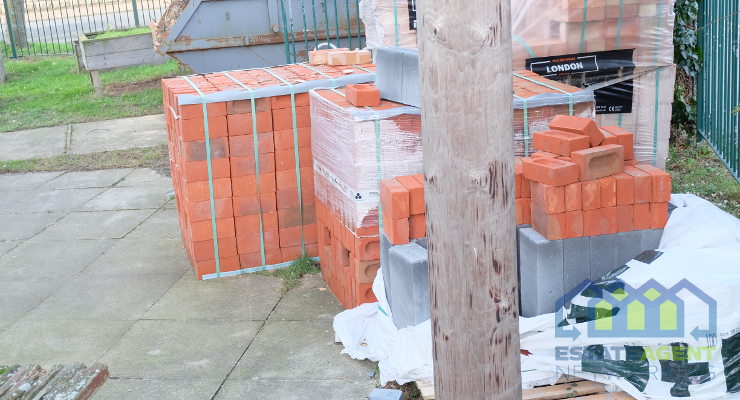ONS Private rent and house prices UK – April 2025
The Price Index of Private Rents (PIPR) measures private rent inflation for new and existing tenancies. The UK House Price Index measures house price inflation.
Main Headlines
- Average UK monthly private rents increased by 7.7%, to £1,332, in the 12 months to March 2025 (provisional estimate); this annual growth rate is down from 8.1% in the 12 months to February 2025.
- Average rents increased to £1,386 (7.8%) in England, £792 (8.9%) in Wales, and £1,001 (5.7%) in Scotland, in the 12 months to March 2025.
- In Northern Ireland, average rents increased to £838 (8.2%) in the 12 months to January 2025.
- In England, private rents annual inflation was highest in the North East (9.4%) and lowest in Yorkshire and The Humber (4.6%), in the 12 months to March 2025.
- Average UK house prices increased by 5.4%, to £268,000, in the 12 months to February 2025 (provisional estimate); this annual growth rate is up from 4.8% in the 12 months to January 2025.
- Average house prices increased to £292,000 (5.3%) in England, £207,000 (4.1%) in Wales, and £186,000 (5.7%) in Scotland, in the 12 months to February 2025.
Thoughts from the Industry
Nathan Emerson, CEO of Propertymark:
“Housing is one of the most fundamental elements that can help drive overall economic progress, so it is welcome news to witness further house price growth year-on-year as we progress into 2025, especially at a time when there is a growing concern as to how international policies may impact the wider UK economy moving forwards. However, there are wider reports suggesting reduced mortgage rates could be a realistic outcome from recent events.
“It remains positive to see people approach the buying and selling process with a strong degree of confidence, despite inflation not being below the Bank of England target level of 2 per cent quite yet. We have seen an upbeat start to the year, and we remain optimistic this will continue into the traditionally busy spring and summer months.”
Simon Gerrard, Chairman of Martyn Gerrard Estate Agents:
“This rise in house prices follows a particularly active first quarter, as buyers raced to beat the stamp duty deadline. With property prices continuing to rise well above affordable levels – particularly in parts of London, where the average first home now costs more than ten times the average salary – the recent stamp duty changes will only exacerbate the crisis for first-time buyers, who will now find it nigh on impossible to get their foot on the property ladder.
“If the Government is serious about supporting first-time buyers, abolishing Stamp Duty for this group altogether would be a good place to start, or changing the regime so that sellers pay it instead. Without meaningful action, we risk going around in circles – observing the same structural issues play out in the market month after month.
“With global economic uncertainty still dominating the backdrop, the Bank of England’s next move on interest rates will be critical. A cut might ease the pressure on mortgage rates, offering some relief for buyers – but it’s far from a silver bullet.”
Greg Tsuman, Managing Director, Lettings of Martyn Gerrard Estate Agents:
“Today’s figures confirm what renters already know: rents are still rising, just not quite as ferociously as before. We’ve reached the upper limit of affordability for renters across the UK, and the gap between existing rents and newly agreed tenancies will likely continue to narrow.
“But for the millions relying on housing benefits, this slower pace of growth offers little relief. The gap between what tenants on benefits receive and what the market demands continues to grow. Since the pandemic, rents have increased by approximately 30%, creating a chasm between support levels and market reality.
“After a long-overdue uplift in Local Housing Allowance last April, rates are already frozen again until 2026, while rents keep climbing. Right now, just 2.5% of private rentals in England are affordable on housing benefit. Around 38% of private renters in England receive LHA support, and across the UK, more than 3.6 million households are now struggling to access an increasingly out-of-reach rental sector. The government’s plans to prevent income-based discrimination are welcome, but they ring hollow if renters on benefits are still effectively priced out.
“It’s time to revisit Section 24. Most landlords – approximately 2.8 million – are still private individuals and are directly impacted by what is effectively a tax on their biggest cost. The majority of these must add at least 33% to any increase in interest payments simply to break even. When landlords are forced to hike rents just to stay afloat, it’s tenants who pay the price.
“Removing Section 24 could be a positive move for the Treasury. It could ease upward pressure on Local Housing Allowance rates in 2026 and help reduce the taxpayer burden associated with temporary accommodation, which becomes necessary when tenants are priced out of the market.”
On Sales
Jean Jameson, Chief Sales Officer at Foxtons:
“March brought good new momentum to the sales market, with strong demand from first-time buyers driving activity, particularly for one- and two-bedroom homes. While the stamp duty change was on the radar for some, it wasn’t the dominant factor, and buyer confidence remained steady. We head into spring with a healthy level of interest and a sense of renewed energy across the market.”
On Lettings:
Gareth Atkins, Managing Director of Lettings:
“The London lettings market is gaining momentum as we enter April, with March delivering a 14% surge in new listings – the largest uplift so far this year. Simultaneously, applicant registrations climbed 11%, reflecting strong seasonal interest and sustained confidence among renters. With more choice coming to the market, renters are well-positioned this spring. At the same time, the steady flow of listings is helping to keep conditions balanced across much of the capital, creating a more stable and competitive environment for everyone navigating the market.”









